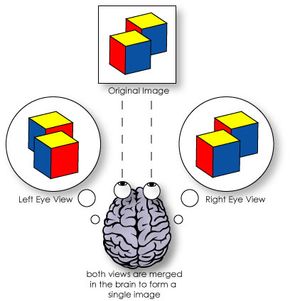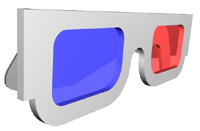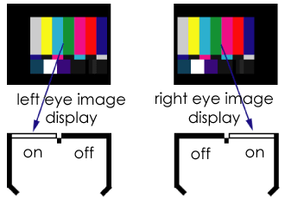
Only a few years ago, seeing in 3-D meant peering through a pair of red-and-blue glasses, or trying not to go cross-eyed in front of a page of fuzzy dots. It was great at the time, but 3-D technology has moved on. Scientists know more about how our vision works than ever before, and our computers are more powerful than ever before -- most of us have sophisticated components in our computer that are dedicated to producing realistic graphics. Put those two things together, and you'll see how 3-D graphics have really begun to take off.
Most computer users are familiar with 3-D games. Back in the '90s, computer enthusiasts were stunned by the game Castle Wolfenstein 3D, which took place in a maze-like castle. It may have been constructed from blocky tiles, but the castle existed in three dimensions -- you could move forward and backward, or hold down the appropriate key and see your viewpoint spin through 360 degrees. Back then, it was revolutionary and quite amazing. Nowadays, gamers enjoy ever more complicated graphics -- smooth, three-dimensional environments complete with realistic lighting and complex simulations of real-life physics grace our screens. But that's the problem -- the screen. The game itself may be in three dimensions, and the player may be able to look wherever he wants with complete freedom, but at the end of the day the picture is displayed on a computer monitor...and that's a flat surface.
Advertisement
That's where PC 3-D glasses come in. They're designed to convince your brain that your monitor is showing a real, three-dimensional object. In order to understand quite how this works, we need to know what sort of work our brain does with the information our eyes give it. Once we know about that, we'll be able to understand just how 3-D glasses do their job.








